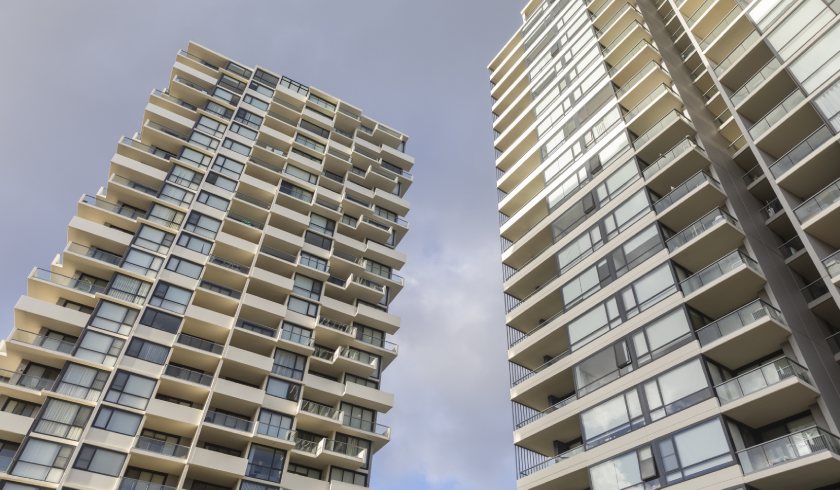Expect inner-city unit rental markets to rebound post-lockdown
After falling behind its housing counterpart for the majority of the pandemic, inner-city unit rents are now on track for a rebound, according to a research firm.

Despite rental rates rising at the fastest rate since 2008, a gap has opened up between the pace of growth between house rents and unit rents in capital city rental markets through the COVID period to date, a report from CoreLogic revealed.
Figures showed that units have risen at a slower pace compared to house rents since the start of the COVID pandemic in March 2020, with capital city unit rents falling behind its counterpart by 5.7 per cent between April and December 2020.
The weaker trend in unit rents follows a similar trend in dwelling values, where house values have risen by 24.2 per cent over the year across the combined capitals. The growth figures are more than double the annual pace of unit values, which are up 11.8 per cent over the year.
And while unit rents have been consistently rising through 2021, the rate of growth has been lower relative to houses.
The unit market’s softer growth rate was attributed to several factors but generally boiled down to an imbalance between supply and demand.
Tim Lawless, the director of research at CoreLogic, explained that on the demand side, a preference shift towards lower density housing options by Aussies during the pandemic and as well as the abrupt cut-off in overseas migration has “interrupted demand in key unit precincts”.
Meanwhile, on the supply side, he pointed out that the unit sector has only recently emerged from an unprecedented period of a rush of newly built unit projects, where construction activity has been more inclined towards the high-rise sector of the market. He noted that the large proportion of this newly built unit stock has been centred within the inner-city rental markets, particularly Sydney and Melbourne.
This imbalance between supply and demand, he explained, has led to the weakness in capital city unit rental markets.
Inner-city unit market on track for a rebound
Despite this gloomy scenario, things are looking up for inner-city unit landlords.
CoreLogic reported that rents are now rising across each of the inner-city unit precincts across capital cities. Even in Melbourne, where the largest falls in rents between March 2020 and October 2021 has been observed, inner-city unit rents are 2.4 per cent higher over the three months ending October and 1.1 per cent higher over the 12-month period, the report showed.
Additionally, Mr Lawless also highlighted that the performance gap between the two, houses and units, has been narrowing for several months as rental demand is shifted back towards the unit sector, where renting is more affordable.
Capital city house rents are up 10.1 per cent since March last year. Meanwhile, unit rents continue to be 0.3 per cent below pre-COVID levels, with inner-city unit rents generally down the most, making them a more attractive option for tenants.
Mr Lawless said that the price difference is, well, making a difference for tenants who are hunting for lower rent payments.
“Through COVID, renting an inner city apartment has become more affordable in raw dollar terms and in relativity to renting a house,” he stated.
He further explained that as rental demand for units improves, the number of advertised rental listings has dropped, converging with the trend in house rental listings which have been consistently falling.
Between March and November of 2020, the number of units advertised for rent increased by 26 per cent across the capital cities, while rental rates fell by 5.4 per cent. Over the same period, the number of house rentals advertised fell by 16 per cent and rents rose by 1.1 per cent, CoreLogic data showed.
During the same period, inner-city unit rentals were identified as the primary driver of the surge in rental listings, with advertised rentals jumping 53 per cent between March and October 2020 across the inner-city precincts across the country.
But since February 2021, data showed that the higher levels of inner-city unit stock have reduced. Data showed that by the end of October 2021, the number of inner-city unit rental listings had fallen to 5.1 per cent below pre-COVID levels and 36 per cent below advertised rental stock levels in January this year.
On the demand side, he sees capital city markets getting a much-needed shot in the arm in the coming months. He said: “Rental demand for inner city tenancies is likely to increase further as the CBD’s and inner suburbs become more vibrant as restrictions ease and workers gradually return to work.
“Once international borders open more fully, its likely demand for inner city unit accommodation will rise more substantially, especially as foreign students and international visitor numbers start to lift.
However, he warned that that the timing for a “normalisation” of overseas migration rates remains highly uncertain, and will highly depend on government policies and Aussies’ appetite for travelling abroad.
